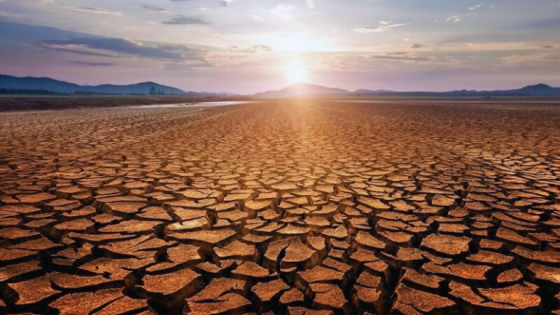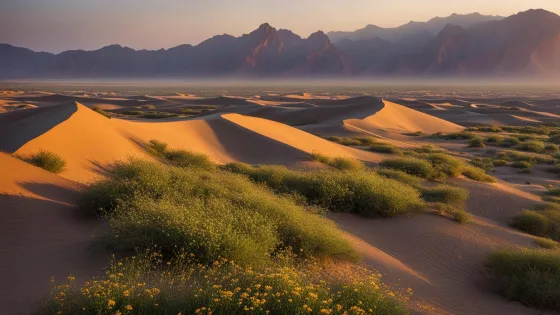Contents
The United Arab Emirates (UAE), with its vast deserts and rapidly growing cities, is not immune to the consequences of global warming. As the world continues to warm, the UAE is facing a range of challenges that threaten its environment, economy, and the well-being of its population. From rising temperatures and sea-level rise to water scarcity and ecosystem disruptions, the impacts of global warming in the UAE are significant and require urgent attention.
Impact of global warming on UAE overview
Global warming has a significant impact on the UAE. Rising temperatures escalate heatwaves, potentially making the country less habitable. As a coastal nation, the UAE faces the threat of rising sea levels, leading to floods and erosion. Water scarcity worsens due to increased evaporation and reduced rainfall. Agriculture suffers from droughts and soil degradation, diminishing crop yields. The UAE’s high energy consumption intensifies carbon emissions and further contributes to global warming. Marine ecosystems suffer from coral bleaching and declining fish populations. The UAE addresses these challenges through renewable energy projects, water conservation measures, and sustainability initiatives.
Rising Temperatures

The UAE is known for its scorching temperatures, with summer highs regularly exceeding 45 degrees Celsius. Unfortunately, impact of global warming on UAE is expected to exacerbate this heat. The Intergovernmental Panel on Climate Change (IPCC) predicts that average temperatures in the Arabian Peninsula could rise by 1.5 to 4.0 degrees Celsius by the end of the century. Such staggering increases have severe implications for the health and productivity of the population.
How to control temperature increasing
Increased temperatures contribute to heat-related illnesses, dehydration risks, and heat exhaustion. Additionally, higher temperatures significantly increase the energy demand for cooling systems, putting a strain on the country’s already considerable energy consumption and carbon emissions. The UAE must focus on energy efficiency measures, renewable energy adoption, and sustainable urban planning to mitigate the impact of rising temperatures.
Read more: UAE Weather Patterns
Sea-Level Rise effects on UAE
The proximity of major UAE cities to the coast makes them highly vulnerable to sea-level rise. With melting ice caps and glaciers, the world’s oceans are expected to rise by nearly one meter by 2100. This threatens coastal regions, including Dubai and Abu Dhabi, with increased flooding, coastal erosion, and salinization of groundwater.
How to control sea-level Rise
To protect coastal areas, the UAE has invested heavily in artificial coastlines, seawalls, and tidal gates. However, relying solely on such infrastructure is neither sustainable nor sufficient. Embracing nature-based solutions such as mangrove restoration, beach nourishment, and the protection of coral reefs can serve as effective measures to mitigate coastal vulnerabilities and preserve marine ecosystems.
Read more: Climate change in UAE
Water Scarcity and impact of global warming on UAE

Water scarcity is a significant concern for the UAE, with a limited natural freshwater supply and a reliance on desalination plants and imported water. Unfortunately, global warming exacerbates this existing challenge. Changes in rainfall patterns and increased evaporation rates threaten water availability, while rising temperatures lead to increased demand for water and higher rates of evaporation.
How to control water scarcity
The UAE has implemented various water conservation strategies like advanced irrigation techniques, wastewater recycling, and smart water management systems. However, more efforts are needed to secure water resources sustainably, such as promoting water-efficient agriculture, reducing water-intensive industries, and raising awareness about water conservation among residents and businesses.
Read more: Average temperature in UAE
Ecosystem Disruptions

The UAE is home to unique and fragile ecosystems, such as mangroves, coral reefs, and desert ecosystems. Global warming poses a considerable risk to these ecosystems through increased temperatures, changing precipitation patterns, and the intensification of extreme weather events.
The mangroves and coral reefs along the UAE’s coasts are particularly vulnerable. Mangroves act as a natural buffer against storms, coastal erosion, and as nurseries for marine life. Impact of global warming on UAE is dangerous. Warmer temperatures and sea-level rise threaten their existence and the valuable services they provide. Similarly, rising ocean temperatures, ocean acidification, and bleaching events threaten the health and biodiversity of coral reefs.
How to organize the ecosystem
Conservation efforts, such as protected areas, habitat restoration, and sustainable fishing practices, must be prioritized to safeguard these vital ecosystems. Additionally, investing in research and monitoring programs will help inform future decision-making and enhance the UAE’s resilience to ecosystem disruptions caused by global warming.
Read more: UAE Industry Trends
Health Impact of global warming on UAE

The combination of extreme heatwaves, dust storms, and air pollution, exacerbated by global warming, poses significant health risks to UAE residents. Rising temperatures increase the incidence of heat-related illnesses, including heat strokes, dehydration, and cardiovascular diseases. Dust storms, a common occurrence in the region, can worsen respiratory conditions and trigger allergies and asthma.
How to mitigate global warming health risks
To mitigate these health risks, the UAE needs to focus on improving air quality through the reduction of greenhouse gas emissions and the adoption of clean energy sources. Furthermore, public health initiatives, including heatwave preparedness programs and awareness campaigns, can educate the population on heat-related health risks and the need for proper hydration and heat protection.
What is the impact of Global Warming on UAE?
Water scarcity, rising sea level, drought, and aridity.
How the UAE is dealing with environmental challenges?
The country has made significant investments in renewable energy projects, such as solar and wind power, to reduce its reliance on fossil fuels.
In conclusion, Global warming has and will continue to impact the United Arab Emirates in diverse ways. However, the country has already taken significant steps to mitigate these impact of global warming on UAE by investing in renewable energy, implementing conservation measures, and promoting sustainable practices.
To adapt further with the impact of global warming on UAE, the country must continue its efforts to transition to a low-carbon economy and adopt climate-resilient strategies. Government collaboration, international partnerships, and public engagement are vital components of successful adaptation. By balancing economic growth with environmental preservation, the UAE can navigate the challenges posed by global warming and lead the way toward a sustainable and resilient future.













